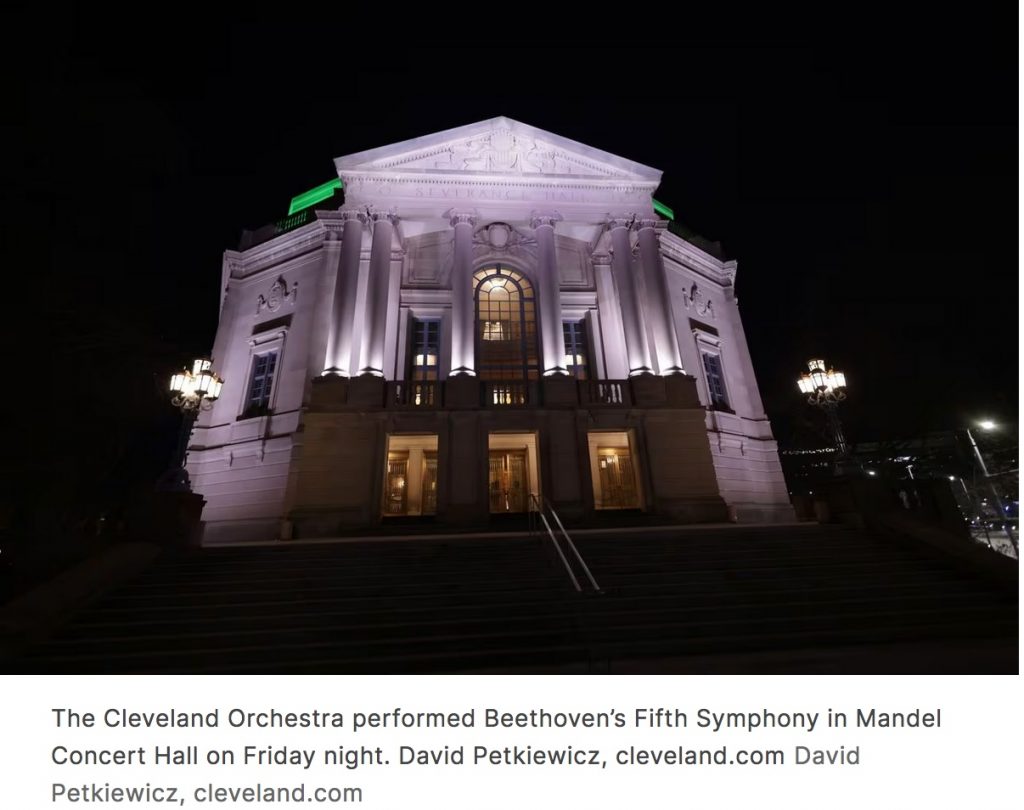
Originally posted on Cleveland.com
CLEVELAND, Ohio — That crackle you may have heard around 9 o’clock on Friday evening may not have been an atmospheric event or even static coming from the dryer. More likely it was The Cleveland Orchestra playing the jubilant fourth movement of Beethoven’s Fifth Symphony in Mandel Concert Hall at Severance Music Center.
The program, in addition to Beethoven’s Fifth and the infrequently performed Schubert Sixth, was intended to be led by Herbert Blomstedt, the eminent 96-year-old Swedish maestro. But Blomstedt took a fall last December, and while he recovers, his engagements in Cleveland and other American cities have been canceled. Jukka-Pekka Saraste, conductor and artistic director of the Helsinki Philharmonic Orchestra, came heroically to the rescue, making his first appearance in Cleveland since October of 1995.
Saraste was a forceful driver of musical events in both works: tempos were brisk and momentum was forward-leaning. He conducted from memory, which might have led to moments of hesitation from another conductor, but no uncertainty ever appeared. His steady visual contact with players only pressed them and the music ever onward. The persistent applause between movements may have been the players’ only safe havens, however brief.
Schubert’s Sixth Symphony is called the “Little C Major” to distinguish it from the longer “Great” Ninth Symphony, also in C — it was composed ten years after Beethoven’s Fifth. The last of Schubert’s early symphonies, it owes more in style to Mozart, Haydn, and even Rossini, than to Beethoven. In Saraste’s hands, Schubert dipped a toe into Beethovenian drama — the slow and solemn introduction of the first movement — only to shy quickly away for sunnier escapades. The first movement fairly bursts with excitement. The Allegretto is naïve, like adolescent love. The scherzo is buoyant and infectious, the finale a Rossinian romp. Flutists Jessica Sindell and Saeran St. Christopher sparkled in their solos and duets.
After the interval, Saraste got straight to business with the Beethoven. He bowed once, whirled around and unleashed hell’s fury. The conductor matched the composer’s tempo marking of 108 — a bone of contention to some — for what Blomstedt has called a “shocking” effect. The drama of the music was surely just as captivating on Friday as it was at its premier in 1808, though the room was far warmer and the concert less long. Saraste drove the inextinguishable motive (“short, short, short, long”) with merciless intensity, awesome orchestral control, and particularly well-differentiated dynamics.
This was clear-cut Beethoven, with a relentless sense of direction. Wind lines were clear and sharply chiseled. Cellos bestowed the Andante con moto melody with broad lyricism and burnished tone. Low strings and timpani brought an otherworldly sense of mystery to the Scherzo. The ensuing transition was splendid and the final Allegro worth waiting for, a full and triumphant resolution in C major.
A loud roar erupted from the capacity crowd after the final chord — but that was only the beginning. Three curtain calls were required of Saraste to fully receive their approval. Let it not be another 29 years before he returns.
Kevin McLaughlin recently retired as librarian at the Cleveland Institute of Music. A freelance writer and editor, his weekly podcast on early jazz, “At the Jazz Band Ball,” may be found on a variety of podcast platforms.
Published on ClevelandClassical.com February 13, 2024.
Click here for a printable copy of this article



